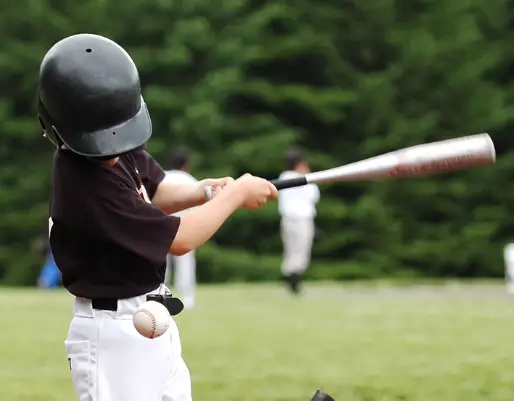The art of bunting is a crucial aspect of softball gameplay. Since softball is a fast-paced game that requires precision and quick decision-making, mastering the art of bunting can be the added advantage you need to lead your team to victory.
Bunting involves hitting the ball softly with the bat and then running quickly to advance to the next base. Bunting can be used in different situations, such as sacrificing a runner to the next base, reaching base safely without a hit, or surprising the defense with a well-placed bunt. However, there are specific rules for bunting in softball that every player should know.
In this article, we will provide an in-depth explanation of the rules for bunting in softball, and give you everything you need to perfect your bunting skills.
What is Bunting in Softball?
Bunting is an offensive strategy in which a player holds the bat in front of the ball and makes contact with it to redirect the ball to achieve specific goals. Bunting is an important technique in softball that allows batters to move runners into better scoring position or to reach base safely.
Bunting is mostly used in softball to accomplish three principal objectives:
To advance a runner from one base to the next
To reach the desired base safely
To surprise the defense and gain an advantage over the competition
Bunting is a strategic element of the game of softball. Advanced players understand when and how to use different types of bunts to gain a competitive advantage.
Bunting Techniques
There are several types of bunts that skilled players can employ, depending on the specific game situation. Understanding the different bunting techniques is essential to becoming an effective bunter.
Here are some types of bunting techniques used in softball:
Sacrifice bunt: This bunt is used to advance the runner. It involves the bunting player making soft contact with the ball, allowing it to roll to the ground, once it comes into contact with the bat. The runner then advances to the next base while the bunting player is put out.
Drag bunt: This bunt is performed by the batter while running towards first base. The player swings the bat in the direction of the ball, making contact with it at the right moment to bunt the ball towards the infield.
Push bunt: Also referred to as the “soft slap,” this bunting technique requires the batter to square up to the plate earlier than usual and shift the body weight forward; the batter then taps the ball to the opposite side of the plate.
Fake bunt: This technique involves the player squaring up at the plate to signal the defense that the player is going to bunt, but instead, the player swings away, attempting to hit the ball over the defense’s head.
Rules for Bunting in Softball
Understanding the rules for bunting in softball is crucial for players of all levels. The following is a comprehensive guideline of the rules of bunting, according to the official rules of softball:
Rule 1: Fair Ball
The ball must be hit in fair territory for a bunt to be considered legal. When the batter makes contact with the ball, there must be no obstruction by the defensive team.
Rule 2: Strike Zone
In softball, there are specific strike zones. The batter should keep the bat in the strike zone range when attempting a bunt, and batters can be called out if the bat is outside of the legal strike zone when making contact with the ball.
Rule 3: Batted Ball
Once the batter has made contact with the ball, the ball should cross the foul line before it can be considered caught by a defensive player.
Rule 4: Batter’s Box
The batter must complete their bunt within the legal batter’s box. Stepping out of the batter’s box while bunting the ball can result in the player being called out.
Rule 5: Baserunner Interference
Baserunners must steer clear of interfering with the catcher’s or pitcher’s attempt to field the ball. If a runner impedes their movement, they will be called out.
Rule 6: Follow-Through
After making contact with the ball, the batter must complete their swing by following through without hitting the opponent with their bat. Failure to follow-through properly can result in the batter being called out.
How Bunting affects Game Strategies
Bunting is a strategic technique that can significantly affect gameplay. As a softball player, it is important to understand how and when to use bunting to create a competitive edge for your team.
Incorporating bunting into your gameplay strategy can have many advantages, including:
A higher likelihood of a successful hit: Bunting creates an element of surprise for the defense and can be used to hit the ball in areas that the defense least expects.
Advancing baserunners: Bunting is crucial in advancing baserunners, especially when there is a runner in scoring position.
Creating opportunities: Bunting can create scoring opportunities, especially if the bunter is quick and has good footwork.
Keeping the defense guessing: Bunting can keep the defense on their toes, making it harder to predict the batter’s next move.
5. When to use Bunting
Understanding when to use bunting can be just as important as knowing how to use it. Here are some situations when bunting is most beneficial:
Sacrifice bunt: When a runner is on first base, with no outs, sacrificing to advance a runner to second will put your team in an excellent position to score.
Defensive shift: A defensive shift positions players in the defense in specific areas based on the batter’s tendencies. Bunting can be used to take advantage of the gaps created by strategic defensive positioning.
Pitcher weaknesses: Bunting can be used to exploit a pitcher’s weaknesses, especially when the pitcher has trouble fielding bunts.
Speedster: If a team has a fast baserunner who can beat out an infield bunt or a bunt down the line, bunting can be an excellent way to use that speed to your advantage.
Conclusion
Bunting is a valuable tool in the game of softball. Not only does it create opportunities for advancing baserunners and scoring runs but it can keep the defense off guard, making it a strategic advantage for skilled players.
Understanding the different types of bunting techniques, the rules of bunting in softball, and knowing when to use bunting, can take your gameplay to the next level. With practice, you can become a proficient bunter and outsmart your opponents on the field.







